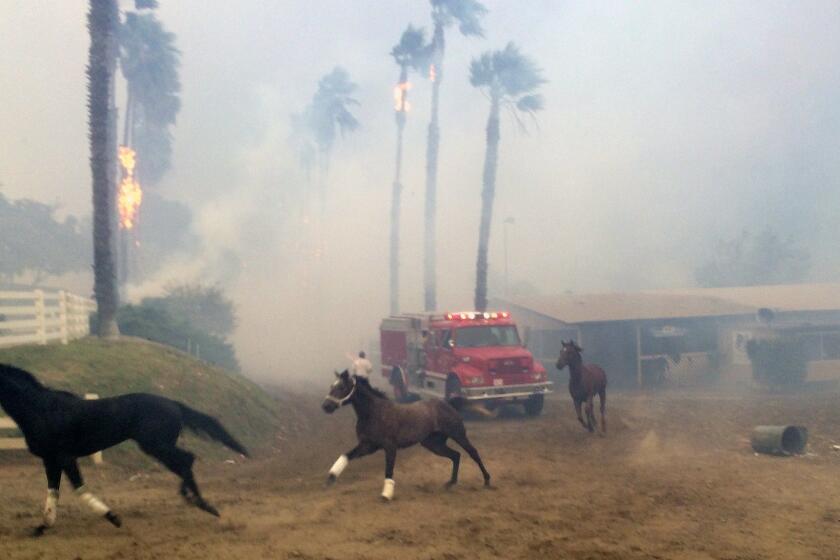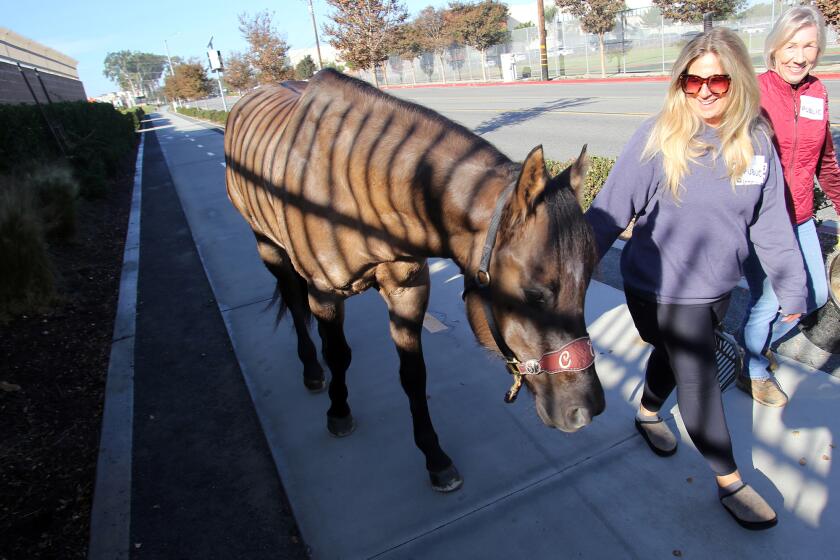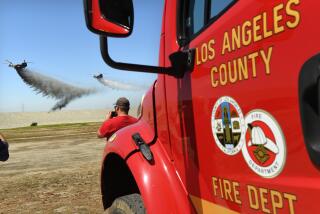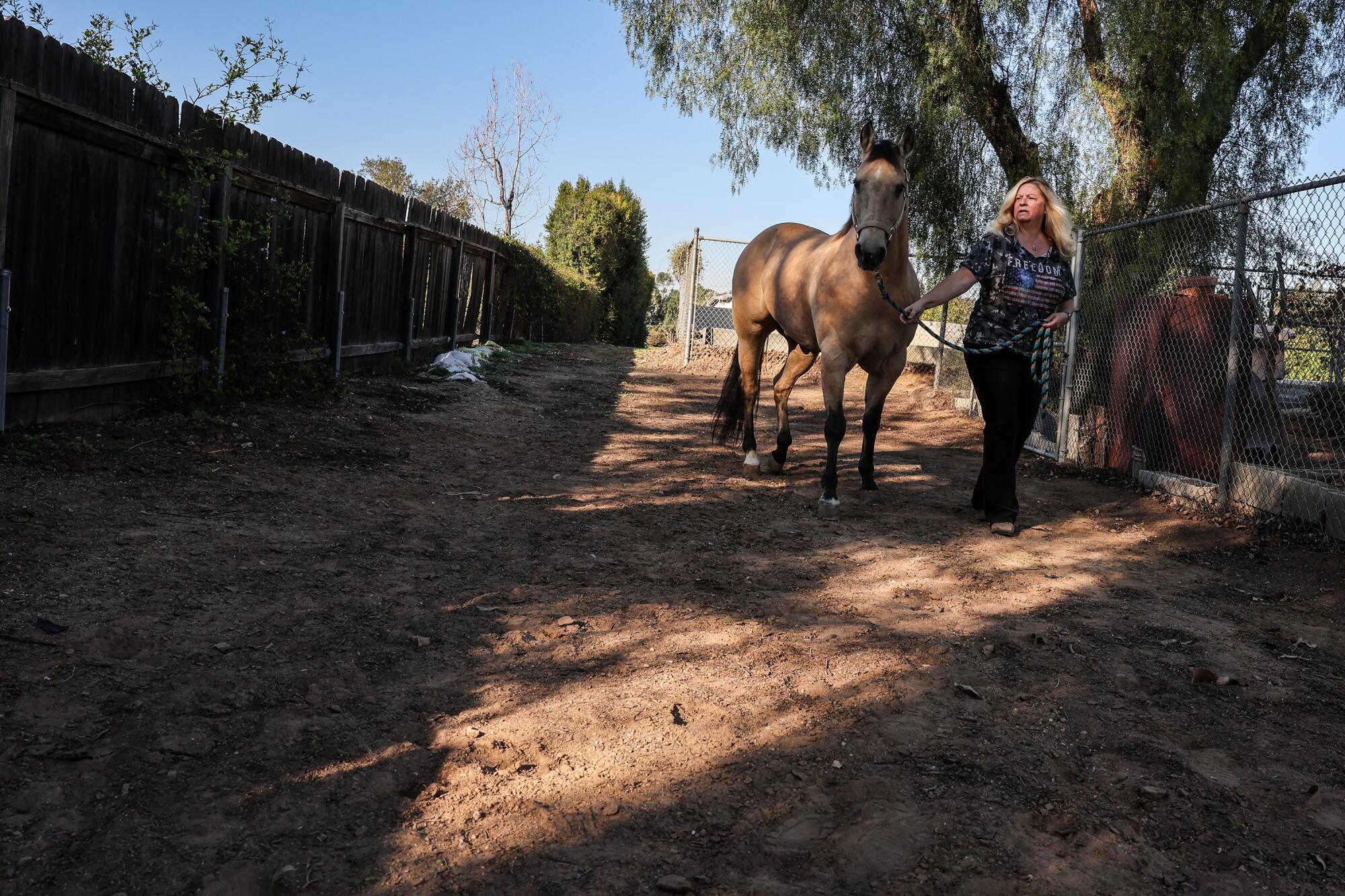
Dee Dee Friedrich remembers how haphazard wildfire horse rescues used to be in Orange County before a team formed to cart animals to safety.
In 2008, the Freeway Complex fire ignited in Corona and raged over the hills into Yorba Linda, where she lived.
With a few hours to spare, Friedrich and her husband roped squealing pigs and guided distressed horses into a trailer and hauled them out.
By the time they rescued the last of their neighbors’ horses, the inferno was burning on both sides of the road.
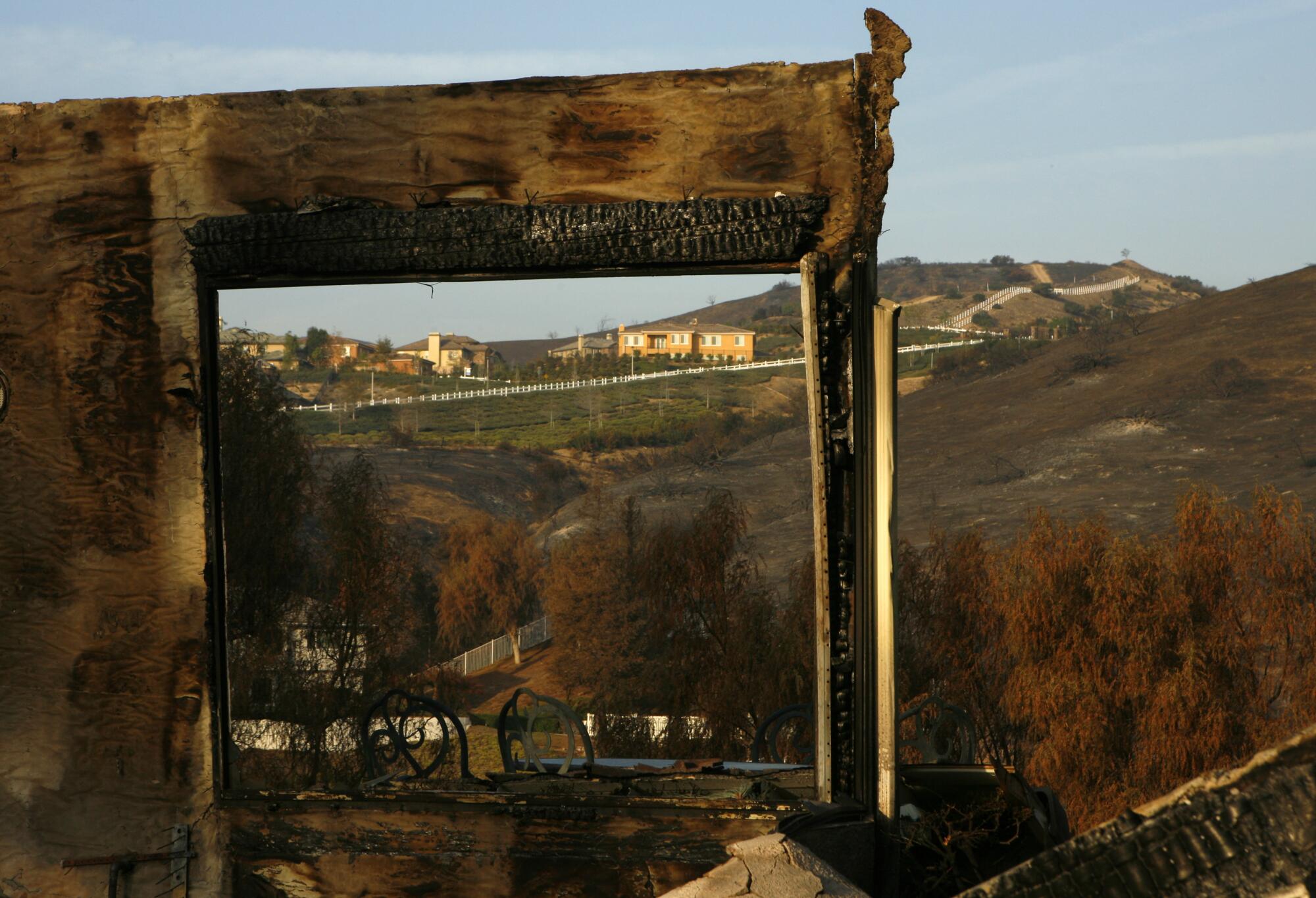
“Everyone that I knew got their animals out, but it was definitely an eye-opener that we were not super prepared,” said Friedrich, president of Yorba Linda Country Riders. “That prompted a lot of people to think, ‘Holy moly, we don’t have a plan.’”
That year, Orange County equestrians formed a mutual aid Large Animal Rescue Team, based in San Juan Capistrano. For the last 15 years, its trained volunteers — including Friedrich, who joined in 2009 — have evacuated horses and livestock from wildfires all over the county.
But now, citing finite resources and a dwindling roster of members, the group has decided to limit its deployments to within San Juan Capistrano city limits. The move leaves equestrians in a big swath of horse country, from the foothills and canyons of the Santa Ana Mountains to the Chino Hills, on their own once again.
“It’s certainly not unique to Orange County that an animal response team feels it doesn’t have the resources to meet its current efforts,” said William Burke, associate director of planning for the California Veterinary Emergency Team, which works with animal rescue teams statewide. “But this is the first instance that I’m aware of where an organization is actually taking the step of circling the wagons and restricting their services.”
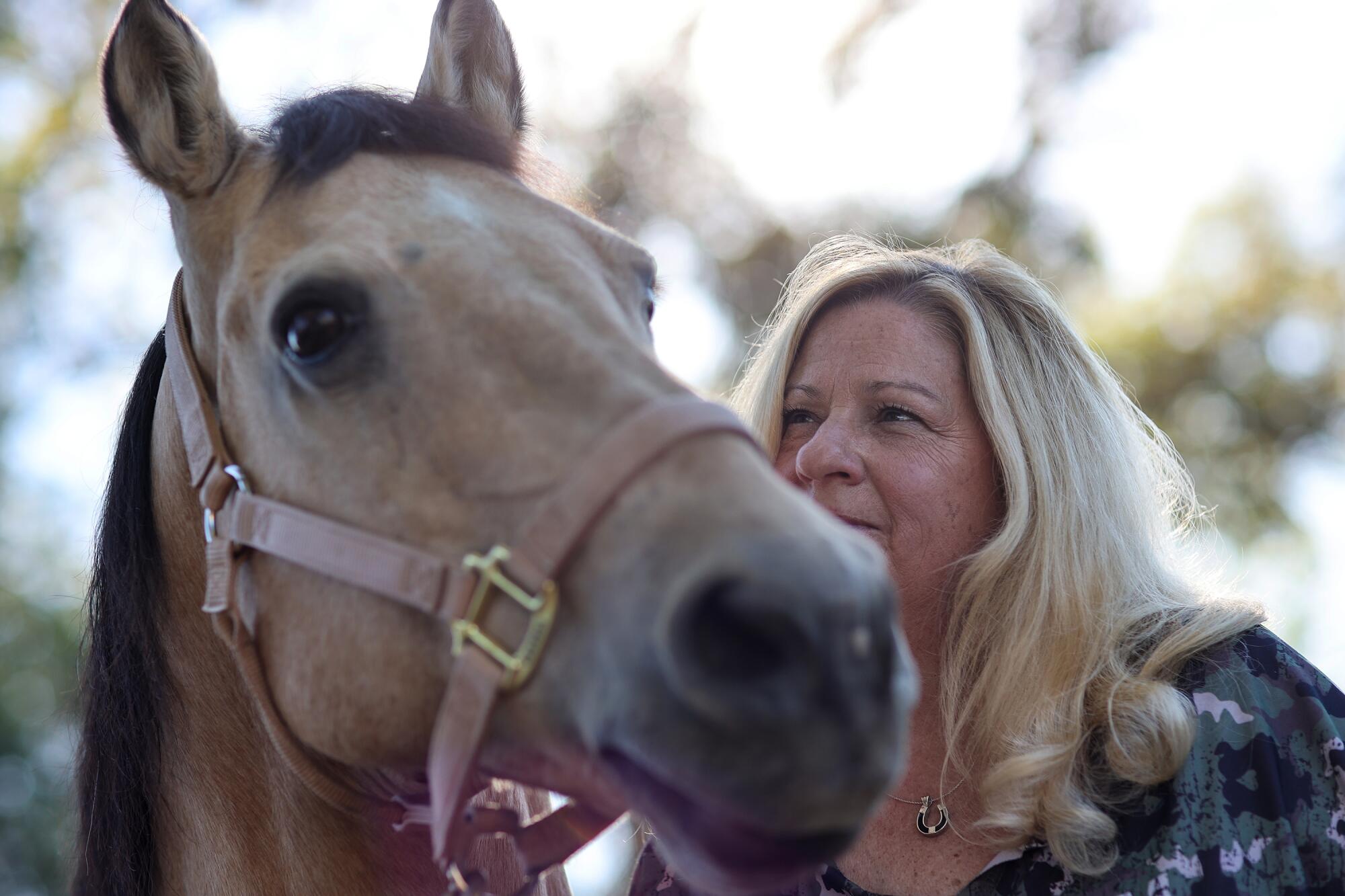
San Juan Capistrano established the program in 2008 with the city’s emergency services manager helping to train volunteers. Training sessions branched beyond San Juan Capistrano to equestrian communities across the county. At its peak, the rescue team boasted a roster of 274 members that the county could tap as a mutual aid resource during wildfires.
But San Juan Capistrano’s decision to scale back now has some horse owners outside of the city concerned.
“The original plan was that when north O.C. was on fire, south county members came to help us and vice versa,” said Friedrich. “Unfortunately, right now, it doesn’t seem like you can rely on anyone else to come help you.”
At least 46 horses were killed at a thoroughbred training facility during the Lilac wildfire in northern San Diego County, and others remain missing.
For generations, Yorba Linda’s foothills have attracted equestrians looking to ride its scenic trails. But as in much of the county, the same chaparral and grassland that makes for picturesque panoramas is extremely flammable during fire season, which, because of climate change, is becoming longer and more explosive.
The geographical spread of the Large Animal Rescue Team, or LART, was critical because volunteers who lived far away from a fire would be available to help those under threat.
Even though the team never signed a formal agreement with the county, it quickly evolved to become part of its overall disaster response.
LART gained accolades early on with volunteers trained on everything from towing a horse trailer to using a Thomas Guide map book when cell service doesn’t work in more remote canyons.
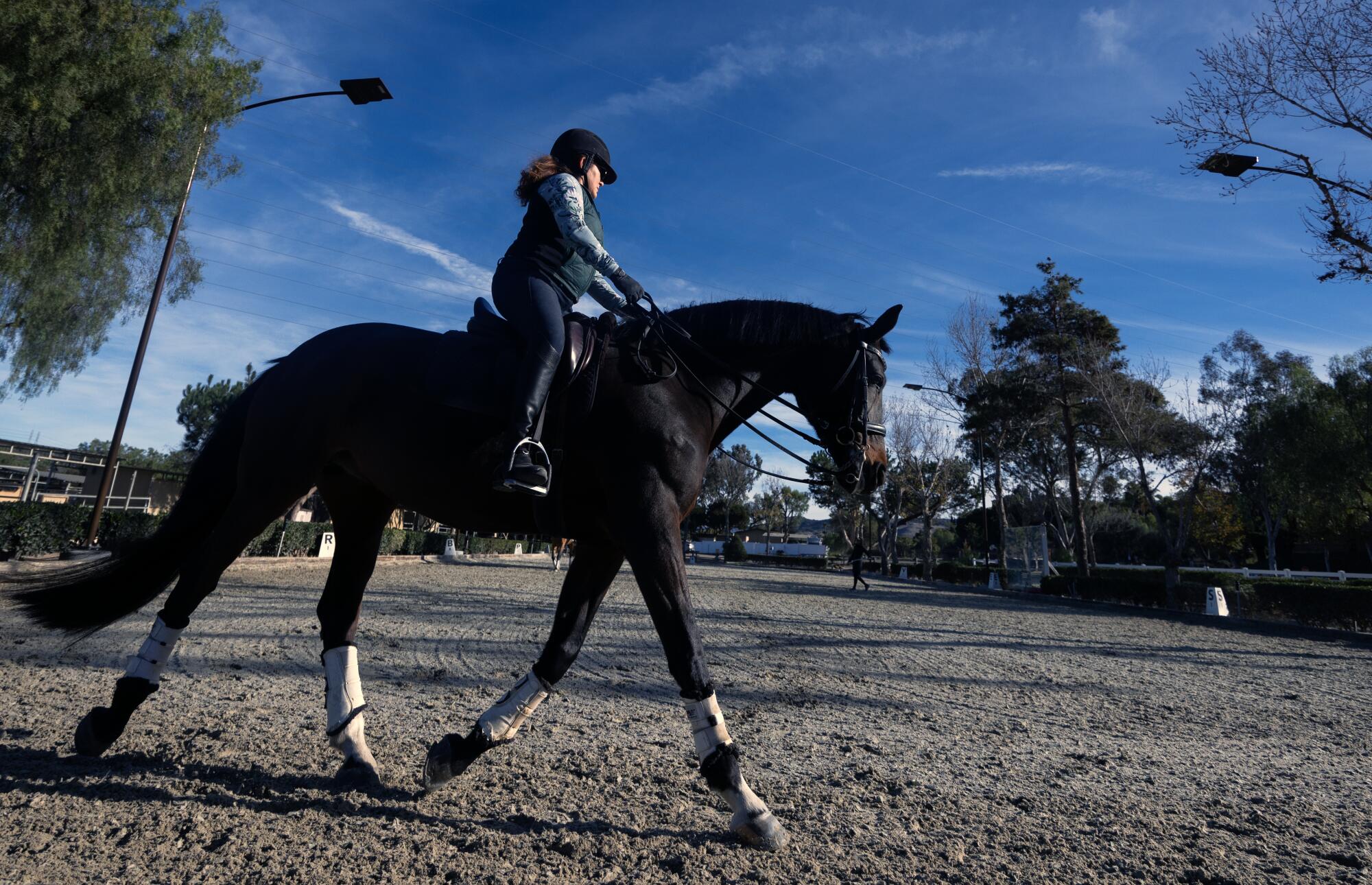
Dr. Julie Ryan Johnson, a veterinarian who helped to establish the rescue team and trained volunteers for the past 15 years, said a key lesson was learning the county’s emergency chain of command, and to wait for agency officials’ request for deployment.
“We couldn’t be cowboys out there,” said Johnson, founder and president of the San Juan Capistrano Equestrian Coalition. “We had to respect and understand how we fit into the whole big picture of a disaster response.”
Once rescued, horses have been housed at several locations, including stables at the Orange County fairgrounds and Los Alamitos Race Course.
The UC Davis Center for Equine Health’s Horse Report in 2014 called San Juan Capistrano’s team “very successful” and a model used by cities in Los Angeles County.
But when the Canyon 2 Fire blazed through Anaheim Hills three years later, LART’s response showed some strain.
The county activated the rescue team to help evacuate more than 100 horses from stables, including at Irvine Regional Park in Orange. Miscommunication between LART and its volunteers sometimes sent members to rescue areas that were already ablaze and didn’t have horses.
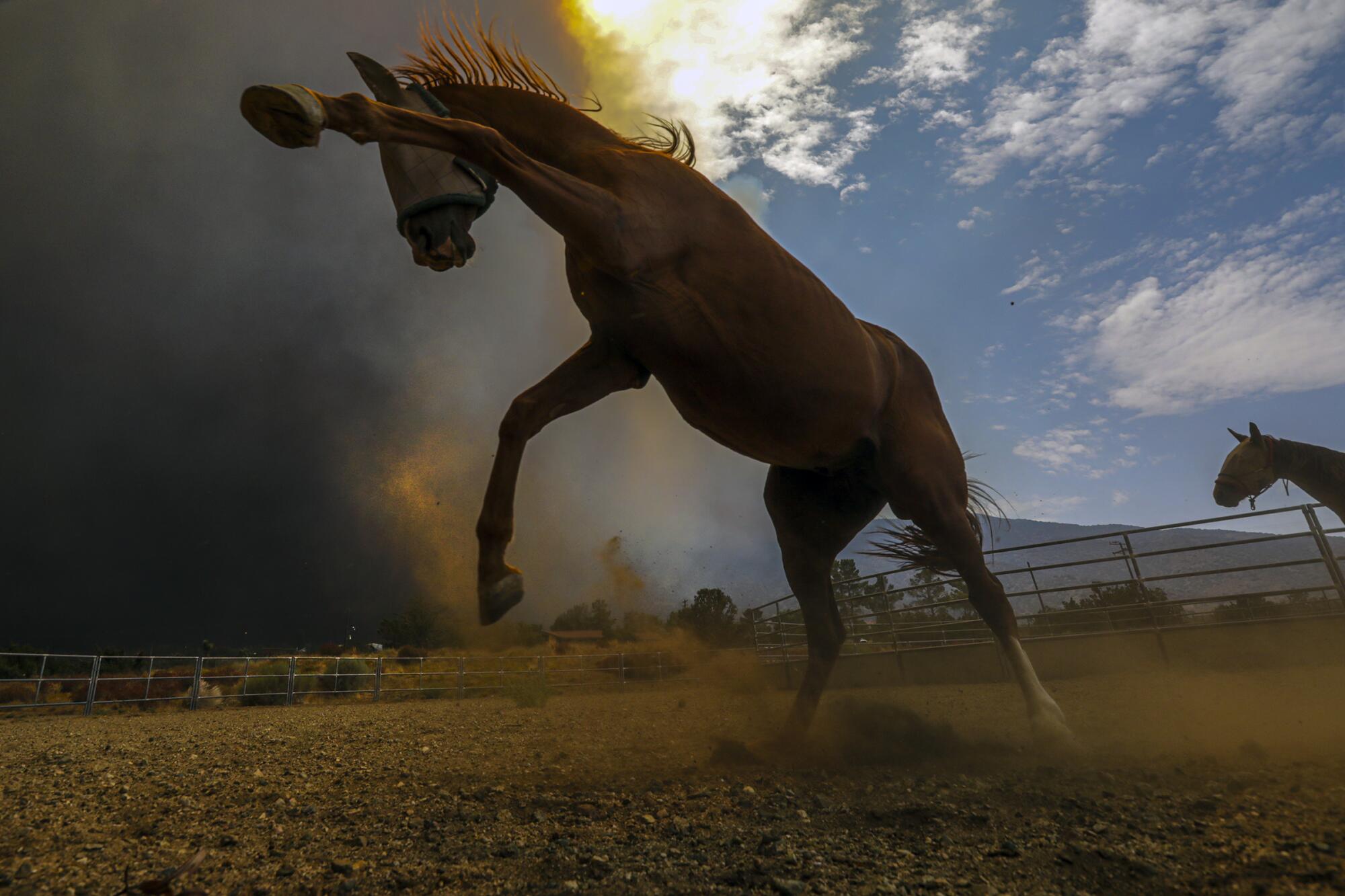
“People were running out of Irvine Park holding two horses and looking for horse trailers,” said Friedrich, who volunteered during the fire. “I ended up with an empty trailer. It was a little disorganized.”
The Orange County Fire Authority’s report after the Canyon 2 Fire noted a “lack of common evacuation terminology” as one factor as to why evacuations were slow, though ultimately successful.
After the fierce 2020 fire season in Orange County, the rescue team received county recognition for its efforts. But key LART leaders still felt that housing its volunteer rescuers under the direction of a county agency, such as OC Animal Care, was the best way forward.
“What would be great is if the county could take over the training so that everybody is being trained the same way,” said Johnson, a former OC Animal Care director. “If you’re trained to the same way, and talking the same language, and understand the chain of command and emergency management system, then you’re going to have a better process.”
Currently, LART reports a roster of just 50 active members, a figure officials say is too small to continue countywide.
In June, city officials alerted the county of its planned Jan. 1 withdrawal and stressed that “an alternative model is imminently necessary” in offering to discuss a transition plan.
By September, San Juan Capistrano city manager Ben Siegel gave his counterparts in other cities an update with a letter stating that “neither the county nor any other agency has expressed interest in assuming responsibility for the LART program.”
Equestrians operating at the Costa Mesa facility will have until June to conduct business as usual but will be included in plans to transition the site toward more public programming, the O.C. Fair Board decided Thursday.
Orange County Supervisor Don Wagner, whose district encompasses fire-prone canyon areas, expressed disappointment in LART’s decision but is confident in the readiness of the county’s disaster response without the rescue team.
“It’s not like we’re starting from scratch with LART gone,” he said. “We are going to have to make some adjustments, but I’m comfortable enough that those adjustments can and will be made. The county should not run out and say the sky is falling.”
Wagner added that canyon-area equestrians have not sounded an alarm with his office over the issue.
Several LART volunteers have given the city permission to share their contact information with the county to swear them in as disaster service workers in the event of a wildfire.
For now, that’s the extent of the relationship between equestrian volunteers and the county.
“The county’s approach to this issue is the same as it is with respect to fire preparedness in general,” Wagner said. “We’re trying to emphasize preparedness. In an emergency, you’re really going to have to be your own first line of defense.”
Cities such as Yorba Linda have shored up preparedness the best they can.
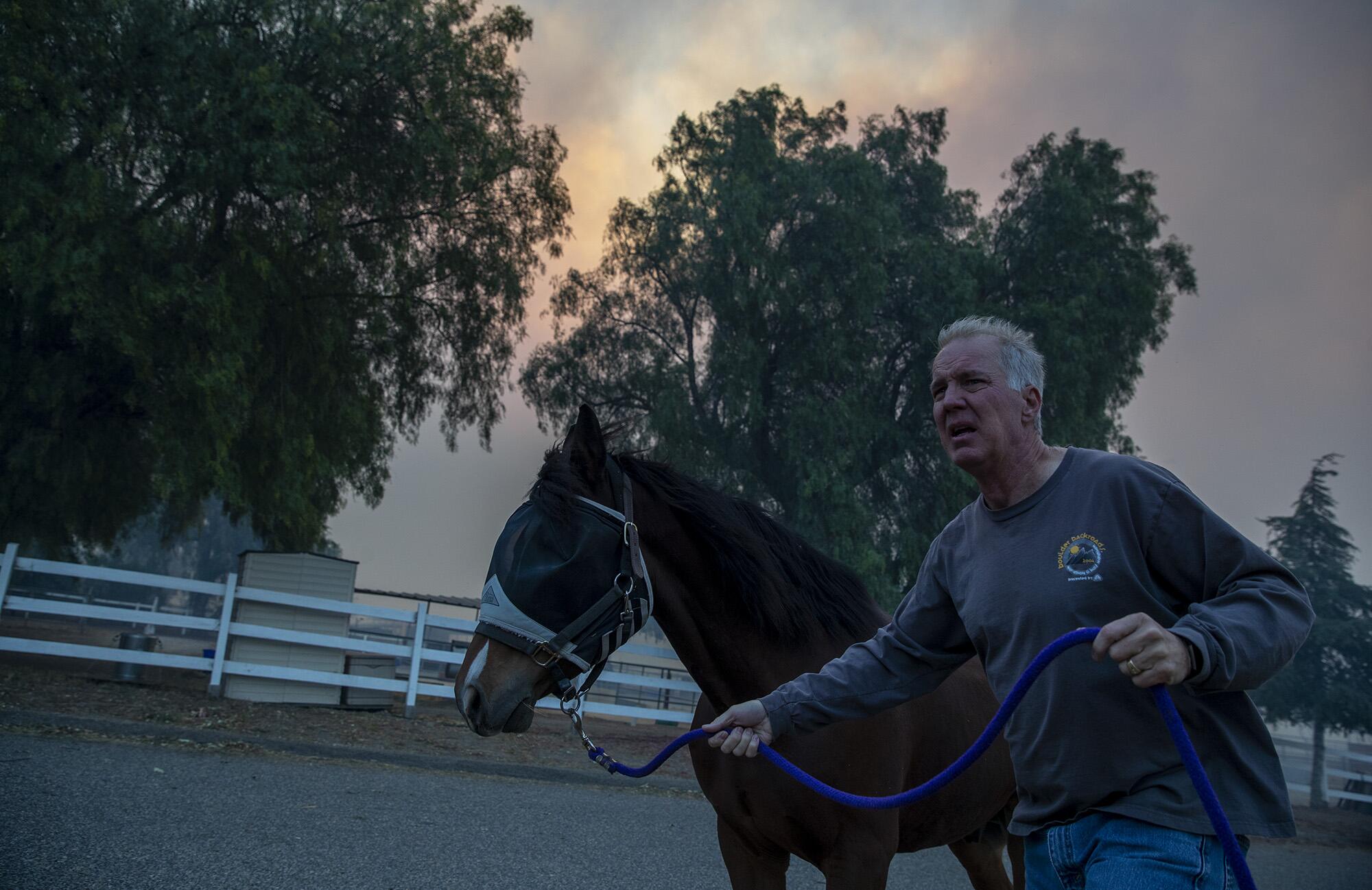
Chris Peña, Yorba Linda’s emergency management coordinator, partnered with Friedrich’s equestrian club for a clinic over the summer that allowed attendees to sign up for AlertOC, the county’s mass notification system, and freshen up on the city’s evacuation maps.
Peña, a horse owner who lives 20 miles south in Trabuco Canyon, is looking to host such clinics every fall before gusty Santa Ana winds whip up dangerous fire conditions.
“Our equestrian community is a dedicated group of neighbors helping neighbors when it comes to emergencies,” he said. “We have established any red flag warnings as our first alert to ensure trailers are being hooked to trucks, supplies are ready [and] gates are unlocked, all in order to be able to get out of the neighborhood early as recommended by the Orange County Fire Authority.”
For Johnson, whatever takes the place of LART needs to be proactive before the embers from the next wildfire come raining down.
“There will always be a need for some rescue to happen, but that shouldn’t be the first line of defense,” she said. “If you’re worried about evacuations when there’s already a fire, that’s a really bad plan.”
More to Read
Sign up for Essential California
The most important California stories and recommendations in your inbox every morning.
You may occasionally receive promotional content from the Los Angeles Times.

